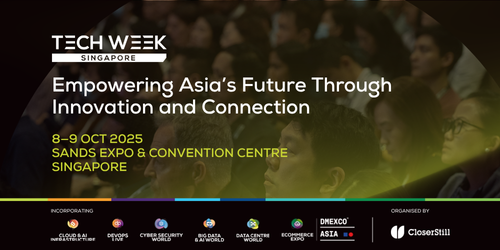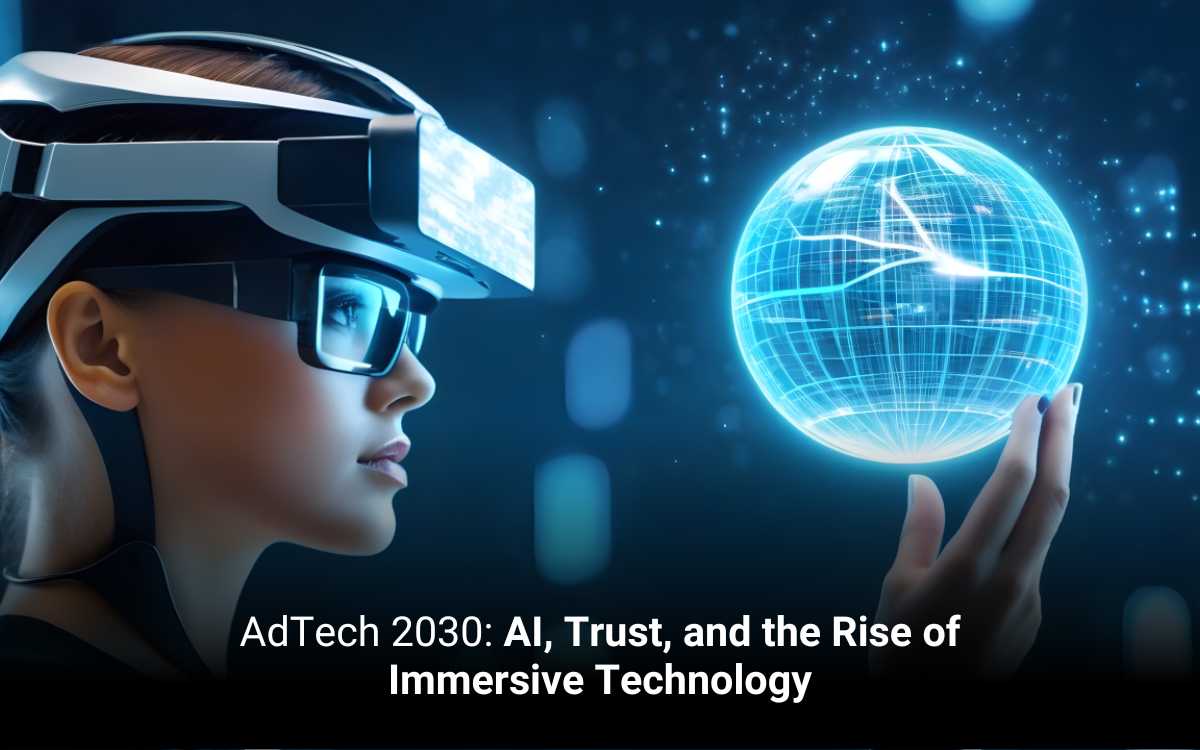It’s 2030, and a consumer walks through a virtual shopping street wearing AR glasses. It’s an AI-driven ad experience that adapts in real-time based on their purchase history. AdTech campaigns are now an immersive interaction powered by AI, built on trust, and woven into digital realities. AdTech 2030 is where data intelligence, immersive technology, and ethical practices redefine how brands and consumers connect.
AdTech 2030 will be defined with trust. As consumers become aware of their privacy, transparency will determine which brands earn attention and loyalty. At the same time, immersive technology will transform ad experiences from one-way communication to participatory storytelling.
This article explains the future of AdTech and how AI and immersive technology will build trust.
How will AI redefine the AdTech ecosystem by 2030
Here’s how AI will reshape the AdTech ecosystem.
1. Real-Time Creative Intelligence
Generative AI will produce adaptive ad creatives that evolve based on audience response and platform.
Example: A cybersecurity firm utilizes AI to generate multiple ad versions that dynamically adjust tone and visuals based on the viewer.
Impact: Every ad impression becomes contextually relevant.
2. AI-Driven Decision Making
AI will unify AdTech stacks into ecosystems that make data actionable across touchpoints.
Example: A marketing automation platform integrates CRM, analytics, and programmatic systems to provide unified dashboards.
Impact: Marketers shift from data analysts to orchestrators, guided by AI-driven insights.
3. Ethical and Transparent Data Frameworks
With privacy laws and user consent at the forefront, ethical AI models will become the norm.
Example: AdTech vendors offer “explainable AI” dashboards that visualize why specific ads are served.
Impact: Trust becomes a competitive differentiator in AI-driven AdTech.
4. Immersive AI Experiences
AI will power immersive technology, blending AR, VR, and metaverse advertising into the customer journey.
Example: An industrial design brand hosts AI-VR demos, allowing clients to explore 3D prototypes before making a purchase.
Impact: Immersive experiences will transform engagement from transactional to experiential.
Has Immersive AdTech Moved to Mainstream Adoption?
Here’s how immersive AdTech is moving into the mainstream.
1. Virtual Product Demonstrations
Immersive technology enables brands to showcase their products in AR and VR environments.
Example: A manufacturing solutions provider utilizes a VR experience to enable potential clients to “walk through” a smart factory.
Impact: Replaces static presentations with storytelling that builds buyer confidence.
2. Hybrid and Virtual Events
Trade shows, product launches, and events are evolving into hybrid experiences.
Example: A cloud technology company hosts an AI-powered VR summit where attendees interact with virtual booths and networks through avatars.
Impact: Expands global reach, captures engagement analytics, and creates long-term brand recall.
3. AI Interactive Advertising
AI and immersive tech are merging to create two-way ad interactions instead of one-way impressions.
Example: A cybersecurity firm uses an AR ad that lets IT leaders “test” breach scenarios on their mobile screens.
Impact: Converts passive viewers into active participants, deepening understanding of brand value.
4. Integration with the Metaverse and Digital Twins
Enterprises are utilizing digital twins, which are virtual representations of physical systems, to foster collaboration.
Example: An energy company builds an AI digital twin of a power plant, allowing potential partners to explore its sustainability features.
Impact: Demonstrates innovation while simplifying complex technical narratives.
What Ecosystems Will Drive the Next Wave of AdTech Innovation
Here’s a breakdown of the ecosystems that will define the next wave of AdTech innovation.
1. Ethical Data Ecosystems
As user expectations evolve, trust-driven ecosystems will become central to AdTech.
Example: An AdTech provider develops a “clean data room” model, where partners exchange insights without breaching privacy laws.
Impact: Builds consumer trust and sets new standards for responsible AdTech governance.
Why it matters: In the post-cookie era, transparent data practices will define which brands lead.
2. Immersive Experience Ecosystems
The convergence of immersive technology, AI, and 3D environments will redefine brand engagement and storytelling.
Example: A software company builds a VR collaboration hub where clients can test solutions, attend live product demos, and interact with AI assistants.
Impact: Transforms static ads into sensory experiences that build connections.
Why it matters: Immersive ecosystems will become the new standard for the customer journey, where value is experienced.
4. Cross-Platform Ecosystems
Future AdTech innovation will depend on systems that communicate seamlessly across platforms, devices, and channels.
Example: A FinTech company utilizes an AdTech framework that connects LinkedIn Ads, programmatic platforms, and data warehouses.
Impact: Ensures efficient media spend and improved customer lifetime value (CLV).
Why it matters: A cross-platform ecosystem is the foundation for omnichannel personalization.
5. Creator and Partnership Ecosystems
Ecosystems between brands, creators, and AI will drive authentic engagement and content.
Example: A tech enterprise partners with industry influencers and uses AI co-branded content to target niche audiences.
Impact: Combines human creativity with AI precision, increasing reach.
Why it matters: Authenticity will be measurable, and partnerships will power brand equity.
6. Sustainable Innovation Ecosystems
Brands will integrate sustainability metrics into their AdTech ecosystems.
Example: An AdTech platform develops “green algorithms” to minimize energy consumption during programmatic bidding.
Impact: Aligns marketing innovation with ESG commitments.
Why it matters: Sustainability is becoming both a brand differentiator and a compliance requirement.
Conclusion
The future of AdTech 2030 is human-centered and experience-driven. Leaders should not chase the next tool but reimagine their strategy around transparency and technology. Convergence will empower businesses to reach audiences with creativity and integrity.
As we step into the future of AdTech 2030, the opportunity belongs to those who act with vision. Start building your trustworthy and immersive AdTech ecosystem because the future of advertising is already unfolding.




